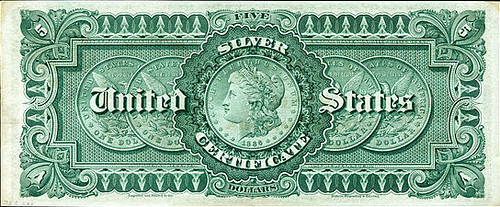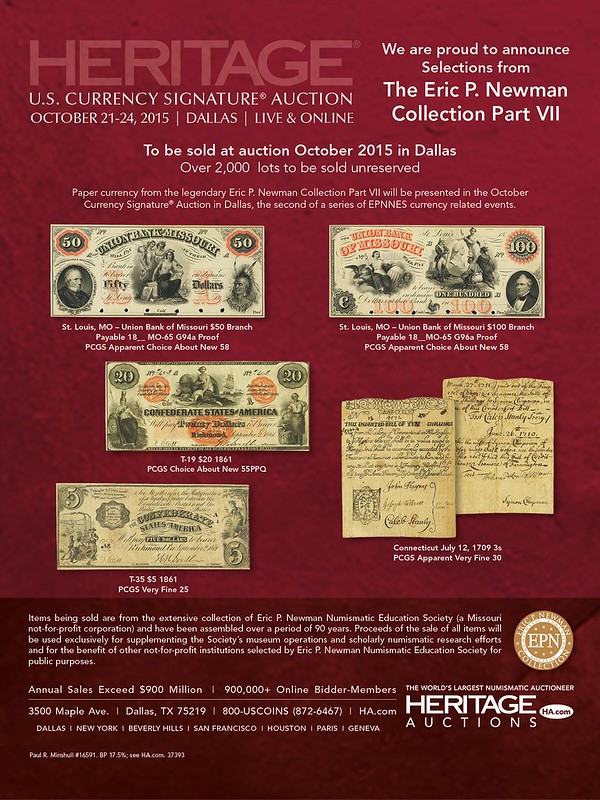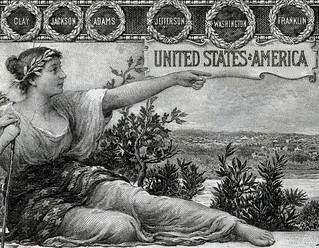
PREV ARTICLE
NEXT ARTICLE
FULL ISSUE
PREV FULL ISSUE
ATLAS OBSCURA LOOKS AT 1896 EDUCATIONAL SERIES NOTES
The Atlas Obscura web site took a look this week at the 1896 Educational Series notes. Here's an excerpt. -Editor
This hasn't always been true, though. Back in the 1890s, there was a conscious effort to turn American money into pocket-sized works of art. It resulted in the creation of what is still regarded as the most beautiful set of bank notes ever issued in the United States: the Educational Series of silver certificates. Silver certificates, issued between 1878 and 1964, were a type of representative money that could be traded in at a bank for their face value in silver dollar coins. As with most paper currency in the United States, silver certificates usually featured a portrait of a deceased president on the obverse side of the note, which was printed with black ink. The reverse side, most often printed in green, tended not to depict any presidents or pioneers, but instead had ornate, intricate designs that swirled around the numbers and lettering to help prevent counterfeiting. In the case of the 1886 $5 silver certificate, pictured below, there was even an illustration of coins on the reverse—money depicted on your money. 
In an effort to bring more artistic merit to the silver certificate, the BEP approached Edwin Blashfield, Will H. Low, and Walter Shirlaw, three artists known for their elegant allegorical paintings. As muralists, Blashfield and Low were accustomed to working at a much larger scale than the 3.125-by-7.4218-inch dimensions of a silver certificate. But the painters' flair for eye-pleasing composition and their ability to translate principles of national character into gorgeous tableaus of women in flowing robes was paramount. They were encouraged to submit large paintings, which a team of skilled engravers could then translate to currency-compatible format. According to the aforementioned Times article, 15 to 20 engravers worked on each note, each one assigned to a particular section of the design. The resulting three artworks formed the basis for the $1, $2, and $5 silver certificates that came to be known as the 1896 Educational Series. The three silver certificates in the Educational Series are among 250 notes currently on display at New York's Museum of American Finance, in an exhibit titled America in Circulation. The Smithsonian's National Numismatic Collection in Washington D.C. also has a full set of the 1896 notes, while the Money Museum in Chicago has the $5—see it for yourself and decide whether it really is the most beautiful bank note ever released in the United States. To read the complete article, see:

Wayne Homren, Editor The Numismatic Bibliomania Society is a non-profit organization promoting numismatic literature. See our web site at coinbooks.org. To submit items for publication in The E-Sylum, write to the Editor at this address: whomren@gmail.com To subscribe go to: https://my.binhost.com/lists/listinfo/esylum All Rights Reserved. NBS Home Page Contact the NBS webmaster 
|
